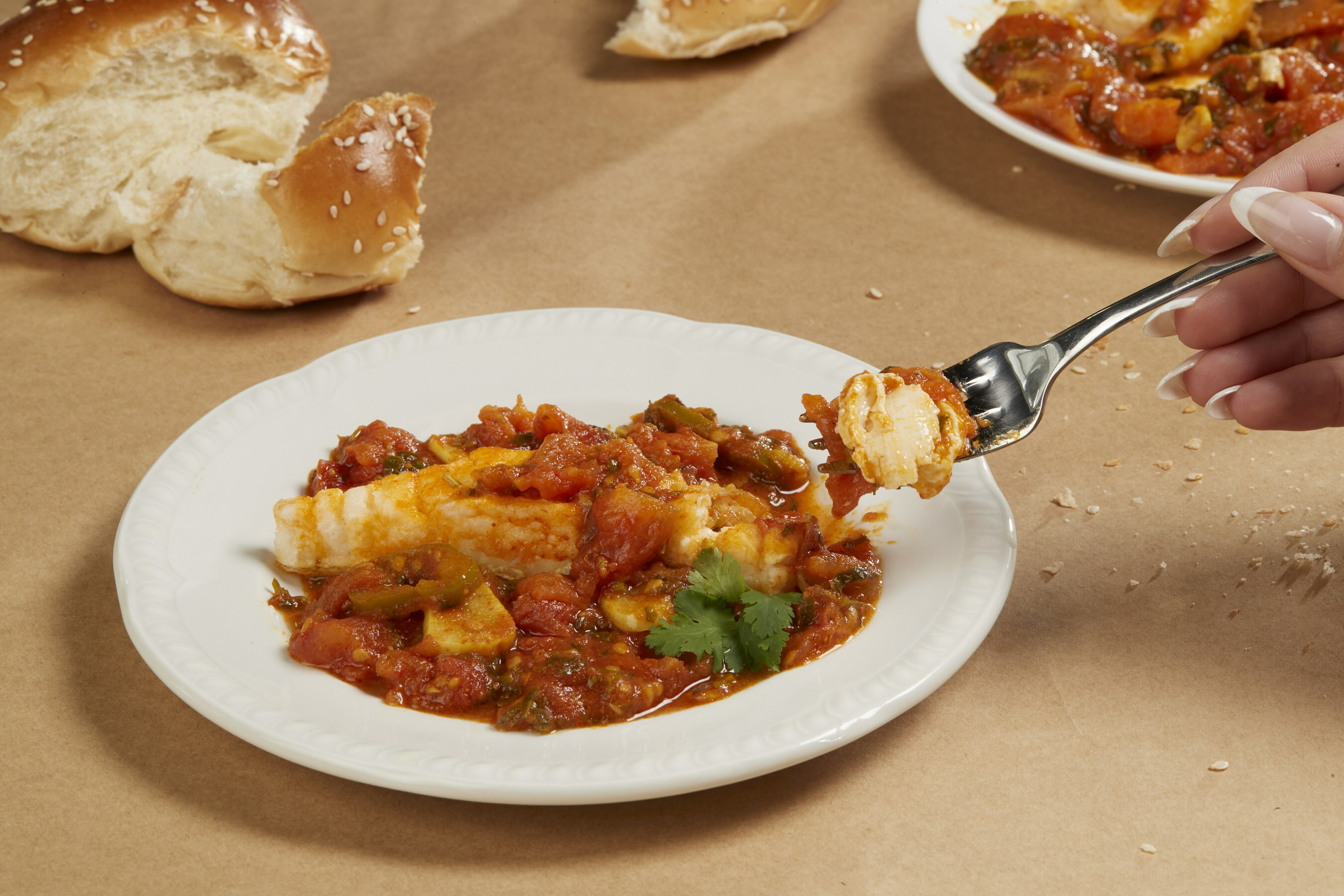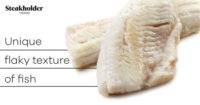Steakholder Foods Ltd., an international deep tech food company in the cultivated meat industry, announced that it has successfully printed the first ready-to-cook cultivated grouper fish product. As part of the strategic partnership between the two companies, Steakholder Foods customized its bio-inks, utilizing grouper cells provided by Umami Meats Pte Ltd.
To celebrate this achievement, Steakholder Foods hosted Mihir Pershad, CEO of Umami Meats, Arik Kaufman, CEO of Steakholder Foods, Megumi Avigail Yoshitomi, Japan Association for Cellular Agriculture, and Adele Li, Chargée d' Affaires at the Embassy of the Republic of Singapore in Israel, at a tasting event in its Israel facilities. The tasting included a "grouper fish chef's table," with piscine delicacies prepared by the company's chef, Moran Lidor, including Singaporean-style and Israeli-style signature fish dishes. The event came on the heels of the visit of the Israeli Prime Minister, who also watched the fish being printed firsthand and tasted the prototype, becoming the first Prime Minister ever to taste 3D-printed cultivated fish.
 Local Israeli fish dish by Chef Moran Lidor. Photo by Shlomi Arbiv.
Local Israeli fish dish by Chef Moran Lidor. Photo by Shlomi Arbiv. The printing and bio-ink customization are steps on the path to commercializing Steakholder Foods' 3D printer, proving its bio-printing and bio-ink technologies to be a sophisticated production platform for structured hybrid and cultivated products and can facilitate various species, therefore various companies and industry players.
The collaboration with Umami Meats, which is backed by a grant from the Singapore-Israel Industrial R&D Foundation, aims to develop a scalable process for producing structured cultivated fish products using Steakholder Foods' proprietary 3D bio-printing technology and customized bio-inks.
Since receiving grouper fish cells from Umami, the Steakholder Foods team has been creating customized bio-inks and optimizing the taste and texture of its printed grouper, all aimed toward finalizing a prototype. The 3D fish printing represents a successful and meaningful milestone in the partnership between Umami Meats and Steakholder Foods.
Unlike fully cultivated meat products, which still require incubation and maturation after printing, the grouper fish product is ready to cook after printing, thanks to Steakholder Foods' unique technology that allows the mimicking of the flaky texture of cooked fish — a technology that is the subject of a provisional patent application.
Arik Kaufman, CEO of Steakholder Foods, said, "We're excited to be working with Umami Meats to develop 3D-printed structured fish products that have the same great taste and texture as traditionally caught fish, without harming the environment. With an estimated size of $110 billion and projected growth of 3-4% annually in the near future, the seafood and fish market is a long-time part of our vision for introducing sustainable solutions that increase food security ... " Kaufman said. "Having created a customized bio-ink that works effectively with Umami's cells and optimized the taste and texture to meet the high standards of consumers, we anticipate expanding our collaborations to a greater variety of species with additional partners."
Mihir Pershad, CEO of Umami Meats, said, "We are delighted to have produced the world's first whole fillet cultivated fish in partnership with Steakholder Foods. In this first tasting, we showcased a cultivated product that flakes, tastes, and melts in your mouth exactly like excellent fish should. In the coming months, we intend to announce our plans for bringing this world-class cultivated fish to the market."
Source: Steakholder Foods Ltd.




Report Abusive Comment